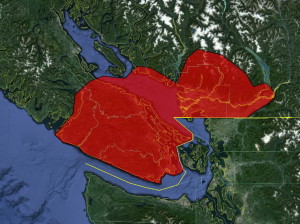Site C’s “Big Dam/Big Lake” design promises irrevocable damage but might go ahead. Is the civil engineering Code of Ethics a root cause for this wicked dilemma?
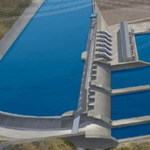
BC Hydro’s proposed $8 billion dam will expropriate and flood 80 km of forests, farms and homes, and 7,000 acres of Class 1 and 2 agriculture land—ignoring impact to farming, and animal migration corridors, while strip-mining the local tax base that communities need to provide public services.
Could a new conversation solve this wicked dilemma?
BC Hydro is chock-full of iron-ringed civil engineers who pride themselves on being able to create a great solution. Could we challenge them to find new thinking and the latest technologies to build a better solution?
And then to ask…if BC Hydro can get equivalent power value with a sustainable solution, but refuses to change the existing Site C plan, are civil engineers being required to focus on a Big Dam solution vs. a Sustainable Energy solution (energy in all its forms)?
Premier Clark courageously introduced the Community Contribution Company (C3) framework to give companies a legal framework to pursue a “wider-society” approach: “Designed to bridge the gap between for-profit businesses and non-profit enterprises, this innovative business model is the first of its kind in Canada. C3 status allows entrepreneurs in B.C. to pursue social goals through their businesses while still generating a profit and providing investment opportunities to like-minded investors.”
Should BC Hydro become BC Energy? And can we require all Crown Corporations to follow the C3 framework? Can we find the same all-Party courage to reflect these new responsibilities – with an upgraded APEG Code of Ethics for C3 Corporations?
For example, using the C3 Code of Ethics option, could one option be a revised Site C in the Moberly River side valley? Are there better civil engineering solutions?

Concept: Moberly River marine aqueduct across the Peace Valley (Google Earth x3 vertical exaggeration)
 Ontario’s Sir Adam Beck Station obtains water through a canal from the upper Niagara River. Could Site C obtain sufficient head supplied with a pipeline or canal from the Peace Dam to a Moberly River head-pond?
Ontario’s Sir Adam Beck Station obtains water through a canal from the upper Niagara River. Could Site C obtain sufficient head supplied with a pipeline or canal from the Peace Dam to a Moberly River head-pond?
- • Separating industrial/commercial traffic from Peace River’s ecology
- • Aqueduct connection between Fort St. John and the headpond
- • Creating a riverboat/rail tourist season with access to Williston Lake
- • Using daily-night cycle of demand fluctuations to:
- o Move water at low cost to top-of-slope reservoirs
- o Supply irrigation waters to river terraces
- o Supply barge locks
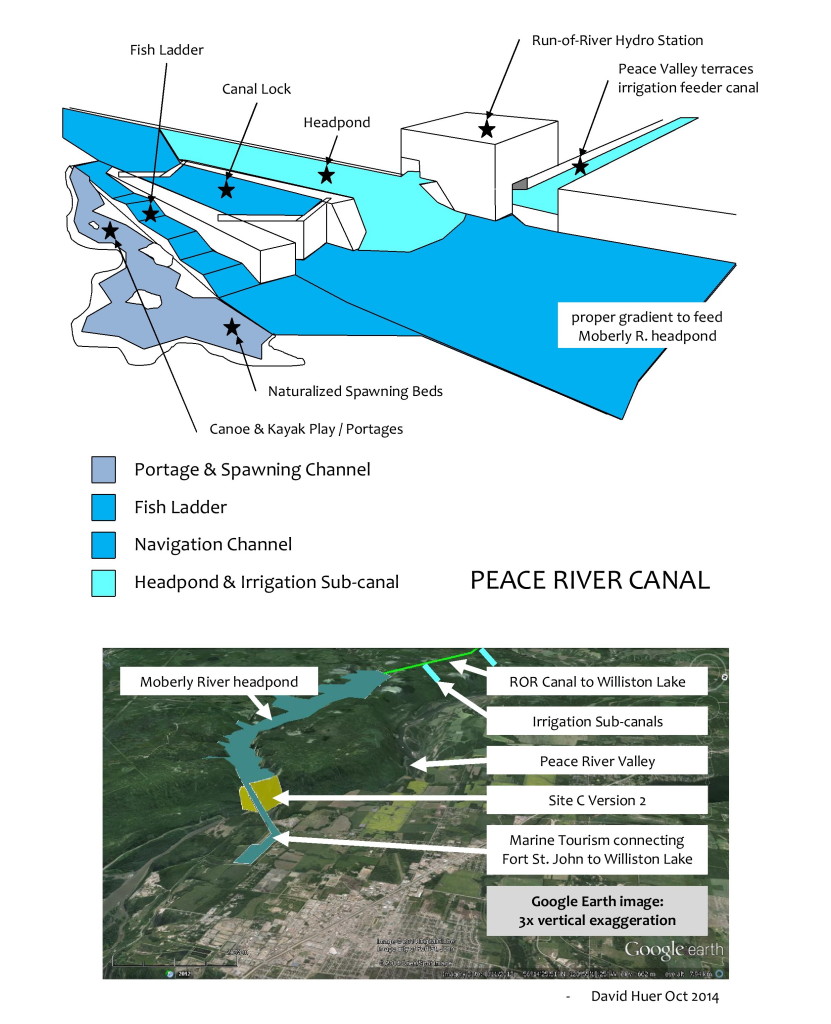
Or do we need Site C, if it makes more ecological sense to obtain the same hydro-electric production . . . by building a reservoir in the headland depressions east of Williston Lake’s W.A.C. Bennett Dam; with hydroelectric spillways falling to the Peace River above and below the lower Peace Dam?
— Dave Huer
CONCEPTS 1, 2 & 3 ILLUSTRATED BELOW:
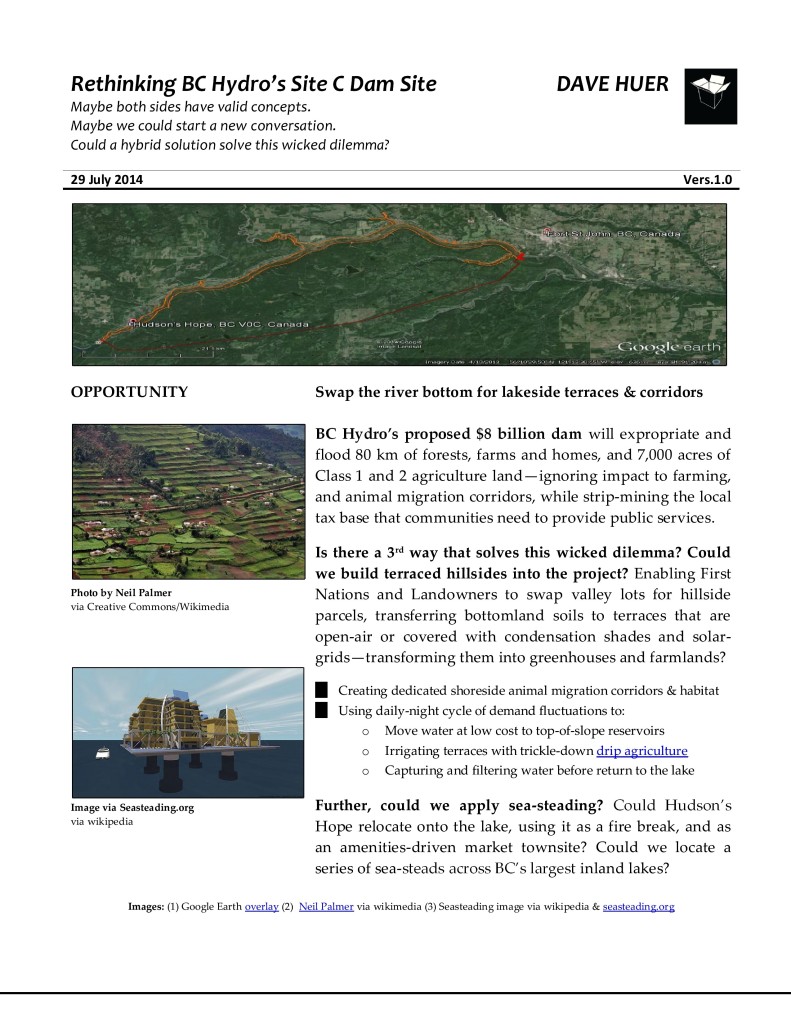

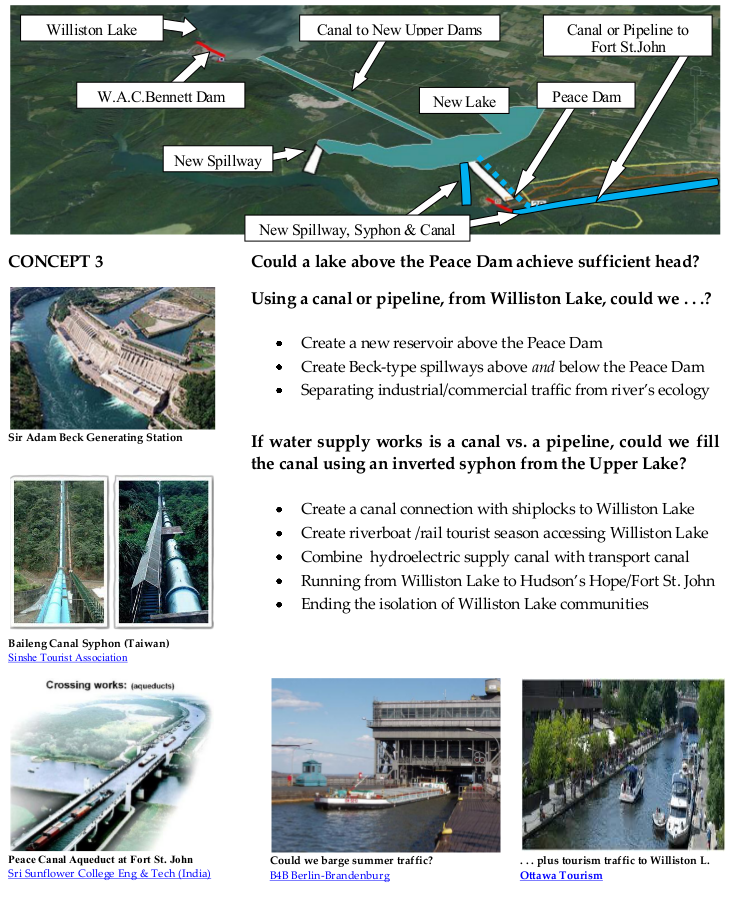 Original behance.net PDF concept here
Original behance.net PDF concept here

 * Software engineer at Alphabet (aka Google).
* Software engineer at Alphabet (aka Google).

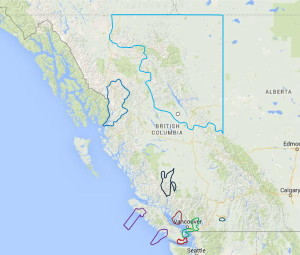
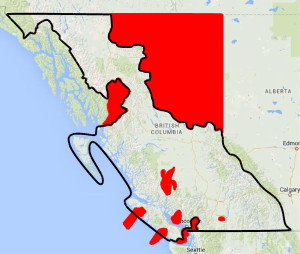 Perhaps First Nations could in fact create a new Province of the Peoples of the Coast (black outline), with a capital and legislature where First Nations people want it — Prince George? Kamloops? Prince Rupert? Or an entirely new, planned, capital city? And a provincial regime that assets the constitutional rights of the landowners? A capital where foreign embassies for other Provinces, the federal government, Province of BC treaty nations (red) and other States could locate?
Perhaps First Nations could in fact create a new Province of the Peoples of the Coast (black outline), with a capital and legislature where First Nations people want it — Prince George? Kamloops? Prince Rupert? Or an entirely new, planned, capital city? And a provincial regime that assets the constitutional rights of the landowners? A capital where foreign embassies for other Provinces, the federal government, Province of BC treaty nations (red) and other States could locate? 